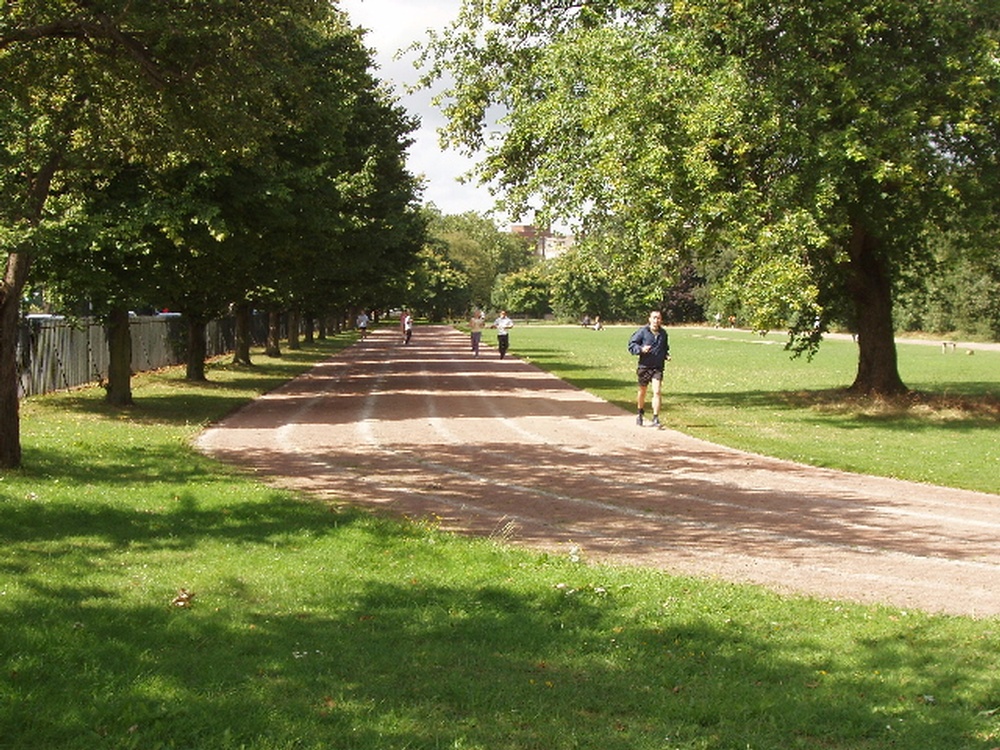Transitioning to a Running Lifestyle

Making a change from an intermittently active lifestyle to a running lifestyle is not as easy as it seems. Here’s the scenario:
I am in my mid 30’s, overweight with a mostly sedentary job (I sit or stand for 6 or more hours each work day). I get to the gym occassionaly but am out of shape. I am a former high school track athlete and some of my colleagues (well-trained endurance athletes regularly competing in marathons and/or triathlons) have been encouraging me to “get back into it”. I figure it’s about time I did, I bet I could get up to a 10k in a few months and probably a half marathon soon after. Six months for a half marathon sounds reasonable to me, that’s a long time, I should be able to do that. How will I do it? Easy, I’ll use what I remember from back in the day AND take advice from my highly trained colleagues.
So, with the above setting and mindset, musculoskeletal injury will occur, without a doubt. It will occur in training or while performing the actual event. In reality, what this former athlete is trying to do is transition from a sedentary lifestyle to a “running” lifestyle, where regular running occurs, complete with variation, progression, and periodization. While the motivation is high and the goal is worthy of encouragement, a reality check is in order.
My recommendations to this person:
- Loosen up on the goal – a bit, six months is NOT enough time for the body to fully adapt to a more intense, active lifestyle.
- Lose weight– I cannot emphasize this enough for runners. Running when overweight means more stress on the joints of the lower body, as well as altered posture and stride mechanics, all quickening the path to injury. Losing weight means changing dietary habits. Simply starting to train and figuring weight will take care of itself can be a big mistake, as the weight will not come off quick enough nor in significant amounts.
- Begin with a walking program – For increased intensity find hills. Alternatively, stationary cycling, and/or deep water running with an aqua-jogger.
- Check injury history – Injuries gained or not rehabilitated properly, regardless of pain level will interfere with normal movement patterns. This will lead to new injuries, or exacerbation of older ones upon beginning a running program
- Integrate a resistance training program – This is of paramount importance. For one, stronger muscles better support joints. For two, both fat and muscle will be reduced during weight loss, resistance training will help hold onto, or even increase muscle, while excess fat is lost.
- Once body weight is were it should be, then progress to jogging.
What this person should NOT do:
- Mimic his well trained colleagues – He should not even mimic most of what they do. Why? See this post on the principle of individuality.
- Mimic eating habits of well-trained colleagues - It is likely, these athletes are fighting to maintain their weight with frequent and timed meals. Our client needs to LOSE weight, which takes a different approach. This post provides some insight in post-workout meals.
- Expect fitness to return quickly, as it did “back in the day”. An individual cannot undo years of sedentary living (and aging) in a month, nor two months.
A 5k would be a reasonable goal in 6 months, save the 10k for next year and the half marathon for another 6-8 months after that.
Making a lifestyle change from a sedentary one to a running one without musculoskeletal injury can be done BUT will take patience and discipline. The patience to take longer than you think you should to improve, and the discipline to resist going to far too fast.
I hope this helps and thanks for reading.
Looking for guidance in improving your athletic performance? Better yet, ready to make a change in your life? I help folks eat, move, and recover well, contact me here to set up a free consult!
Published by mattktraining
I am currently the Owner of my soloprenuerial company Matt K Training. Through my fitness and nutrition programs I help adults develop skills and practices that help them eat, move, and recover well. Over the past 20 years, in various roles such as a Personal trainer, Exercise Physiologist, Clinical Researcher, and Health Coach I have helped hundreds of adults reach their health and physical performance goals. When not working, I enjoy active pursuits such as playing right field for the Charlton Giants (in a 38+ competitive baseball league), playing tennis, hiking, backpacking, and rock climbing. I also enjoy indoor activities such as playing strategy board games, reading and discussing science fiction literature, dabbling with my guitar, finding creative ways to eat oatmeal, and being a good dad.